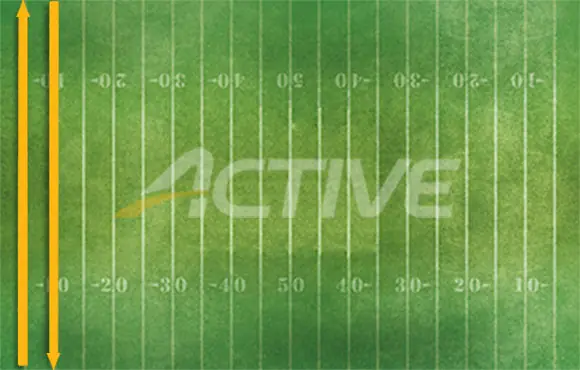Half Marathon Training Tip #8: Know the Course
One of the best ways to get comfortable with your race is to actually train on the course. Running race pace (or race effort) through some of the more challenging elements like hills can help you get a good feel for how the race may unfold.
Obviously, this can be difficult if you are traveling a good distance to the event. If that's the case, seek information on the course map and especially the elevation profile, and look for reviews of the race (with a critical eye, of course—recognizing that some runners exaggerate the challenge of their events). With this information, see what you can do on some of your long runs to mimic the race course. If it has a long early downhill, run such a route and feel the burn in your quads. If the hills are more rolling, look for the same thing around home, even if it involves running a few loops of a few hills.
More: 4 Hill Running Tips From an Expert
Half Marathon Training Case Study
To see how this advice can work in practice, let's look at the case of Sarah, who did have a few marathons under her belt but decided this past spring to improve her already-solid half marathon PR of 1:38:36 while setting a foundation for a Boston-qualifying marathon attempt in the fall.
More: How to Qualify for the 2014 Boston Marathon
Sarah had peaked at around 45 miles per week in her marathon training—while this mileage could be considered high by many half marathon training standards, we knew she could handle that type of volume. We had Sarah complete several 15-mile long runs, and we further increased their value by adding 3 miles at half marathon pace at the end of several of these long runs.
Early in Sarah's training, we focused on speed development through strides, hill sprints (even though her goal race wasn't particularly hilly) and short repeats at 5K pace. As we got further into the training and closer to the race, we shifted the focus more to tempo workouts—first around her lactate threshold effort and then, in combination with longer repeats, closer to her goal half marathon race pace.
Sarah was traveling to her race so running on the course wasn't practical. But since it was a relatively flat course, we emphasized doing her race simulation long runs on flat courses to get used to the repetitive strain such a course can put on your muscles. Finally, we added strength training several times a week, which helped Sarah overcome some minor hip issues that threatened to derail her training.
More: Hip Strengthening and Mobility Exercises for Runners
The end result was a personal record of over three minutes—1:35:16—in which Sarah felt she still had something left in the tank at the end. Her training resulted in an even-better result of 1:10:38 in a 10-mile race a few weeks later on a hillier course. These types of gains are significant on top of PRs that are already very good. And, more importantly, this training cycle provided Sarah with a solid base and notable physiological gains that will serve her well for the fall and beyond.
More: How to Train for a PR
How to Put it all Together
Yes, this seems like a lot. And it is—you should add only a few of the elements that you aren't already doing at most each season. These suggestions are listed in priority order. Focus on your volume first and worry about the more race-specific preparations later, or in a future season. The progression of your training should be from broad to race-specific—start with building your volume and working on your turnover, and then proceed through the season to longer tempo runs that get nearer to your race pace.
Of course, the best way to figure out how this can all work together for you is to find a running coach that can take the time to understand your history, strengths and weaknesses, and the time you have available for training. He or she can then set priorities and the best approach to take to reach your goals. Such a coach can also provide motivation and feedback along the way, making necessary adjustments as you both learn the type of training that gives you the most positive response.
More: Quiz: Do You Need a Running Coach?
 Sign up for your next half marathon race.
Sign up for your next half marathon race.- 3
- of
- 3
About the Author

Get ACTIVE on the Go


13.one Half Marathon
Get expert advice and guidance as you progress in your journey to becoming an avid runner.
Available for iOS







Discuss This Article